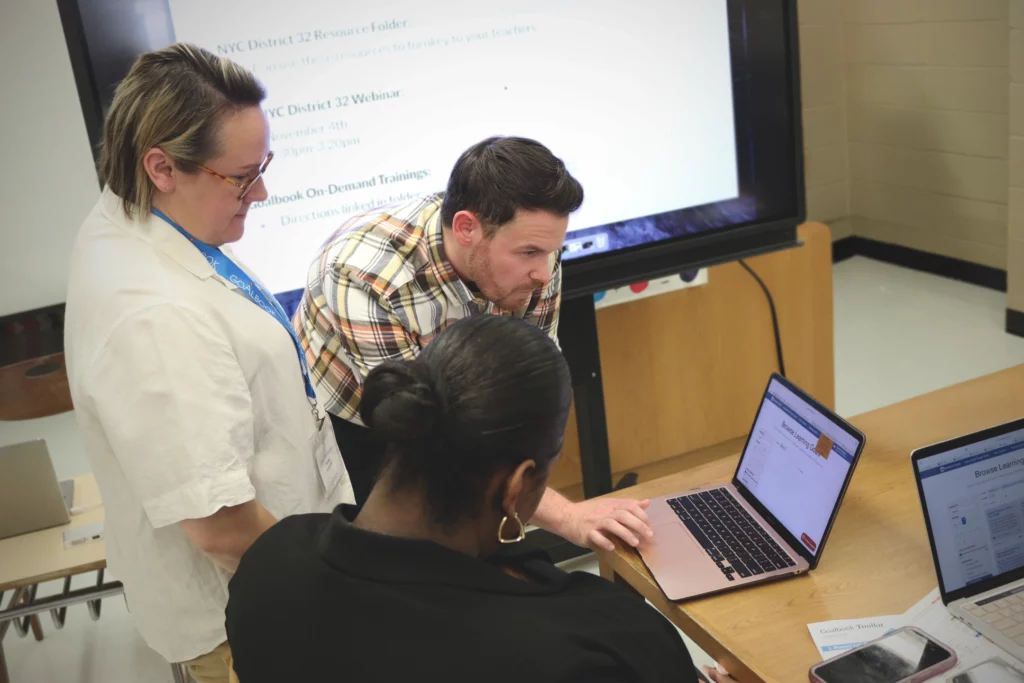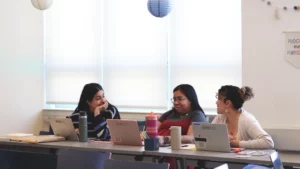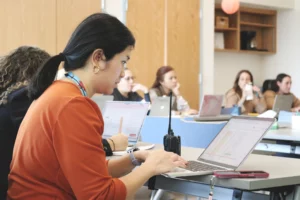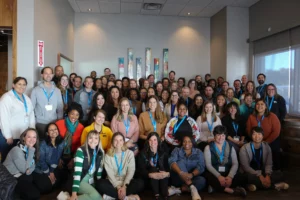“Any of us who’ve worked with teams of educators before knows you can’t just put two people together and call that collaboration.”
These words were spoken by educational consultant Kate Martin in a Goalbook-sponsored webinar called “Co-Teaching Models That Work: A Blueprint and Practical Tips for Special Education Administrators.” Martin delivered an honest and practical message for education leaders: co-teaching is not a single model, but rather a spectrum of instructional approaches.
Goalbook offers free Spotlight Series webinars exclusively for special education administrators as part of our holistic approach and commitment to supporting school districts and the special education community. The webinars feature expert presenters across multiple areas of practice in the special education field.
As intervention systems become overburdened and student needs grow more complex, Martin urged school leaders to reimagine co-teaching — not as a compliance task or static model, but as a strategic approach to strengthening Tier 1 instruction and advancing true inclusion.
Below are three powerful strategies from the webinar, along with concrete next steps for district leaders.
Strategy 1. Start with Intention, Match with Conditions
“Co-teaching isn’t one thing. It’s a set of models — and choosing the right one depends on your goals and your context.”
— Kate Martin
Too often, co-teaching fails not because educators aren’t committed, but because they’re using the wrong model for the conditions at hand.
Martin introduced a two-part framework for determining which co-teaching model will be best for co-teaching teams:
1. Define the intention of co-teaching in a particular setting (e.g., improve assessment scores, increase access to general education).
Ask yourself, what is the intention: For this block? For this group of students? For this class? Also, determine why you chose a co-teaching model, and the results you expect to see from it.
2. Assess the conditions for collaboration (e.g., planning time, staffing, trust levels).
Questions to consider when assessing the conditions: How much planning time do the educators have together? Are both educators in the classroom for the entire block?
Tools You Can Use:
- Use Martin’s turnkey resources and “intention + conditions = model” formula in professional development sessions with co-teaching teams.
- Provide educators with access to Martin’s co-teaching model handout and planning tools by clicking here.
- Support educators in selecting and adjusting co-teaching models based on real-world variables like trust, planning time, and instructional goals.
Strategy 2. Build Collaboration Through Psychological Safety
“The idea of belonging and the need to belong is not just for our students. It’s for the adults; it’s for our teachers. It’s for our paraprofessionals. It’s for everyone in our buildings.”
— Kate Martin
Effective co-teaching requires more than co-presence — it requires psychological safety.
Drawing from Google’s Project Aristotle, a study aimed at figuring out what makes a perfect team, Martin identified two critical behaviors that mattered more than anything else: 1) equality in conversational turn-taking, and 2) ostentatious listening. These two behaviors create psychological safety, which was shown as the single greatest correlation with a group’s success.
When we pair educators together, the most important factor for it to be mutually beneficial is for each of them to have a voice and for that voice to be heard. This fosters trust, which allows educators to truly share responsibility and take instructional risks together.
Tools You Can Use:
- Use the “Levels of Collaboration” handout Martin provided with school leaders to create shared definitions of collaboration.
- Train principals and supervisors to observe and nurture collaboration quality, not solely compliance with service delivery minutes.
- Encourage leaders to audit where co-teaching teams fall on the spectrum from isolation to integration.
Strategy 3. Prioritize Strong, Flexible Tier 1 Instruction
“Instead of getting together to talk about what certain kids can’t do, what if we get together and we talk about what all students need?”
— Kate Martin
Martin made a compelling case that investing time and resources at the Tier 1 level has the greatest impact and will give you the biggest return.
Universal Design for Learning (UDL), when thoughtfully implemented, reduces the need for reactive interventions and makes classrooms more accessible to all students, with and without IEPs.
Tools You Can Use:
- Shift IEP and co-teaching team conversations from “what can’t the student do?” to “how can Tier 1 be designed differently?”
- Use co-teaching planning templates that start with UDL supports before jumping to individual accommodations.
- Work with school and district leaders to allocate professional development toward strengthening general educators’ capacity for differentiation and inclusive practices.
Final Thoughts
Kate Martin’s framework invites special education administrators to move beyond compliance-driven co-teaching and into a more strategic, impactful model rooted in inclusion and instructional quality. By helping educators define the intention and conditions of co-teaching, fostering psychological safety, and designing Tier 1 instruction for the real diversity of learners, administrators can make co-teaching a powerful lever for equity and success.
“It’s not inclusion if you invite people into a space you’re unwilling to change.”
— Muna Abdi
To discover more details about the practical tips, watch Martin’s full presentation:
References:
Martin, K. (2024, October 24). Co-Teaching Models That Work: A Blueprint and Practical Tips for Special Education Administrators. [Webinar]. Goalbook. https://vimeo.com/1023032370/29d9cc5bdb?share=copy







